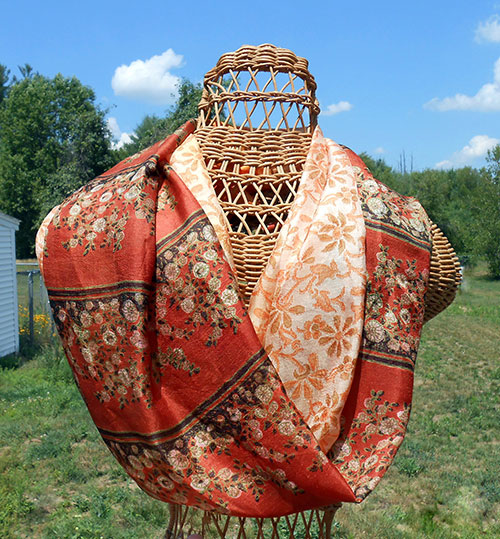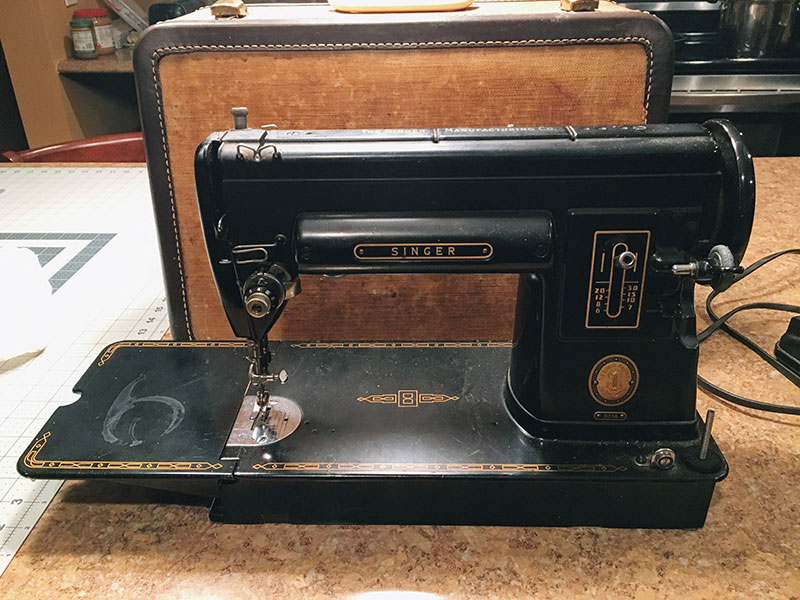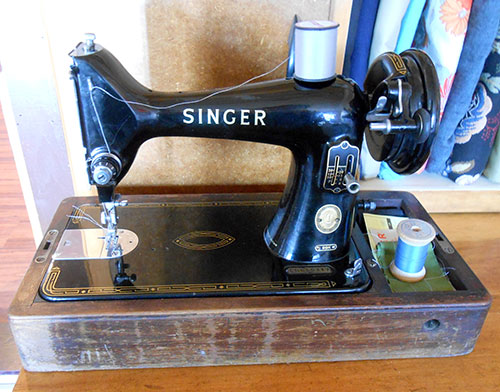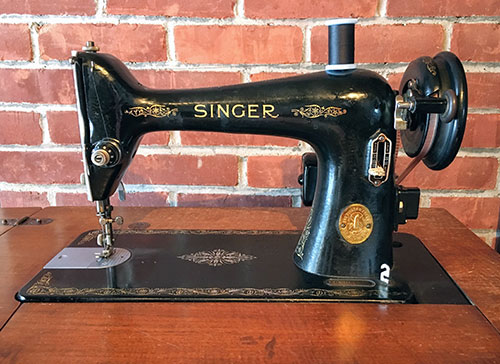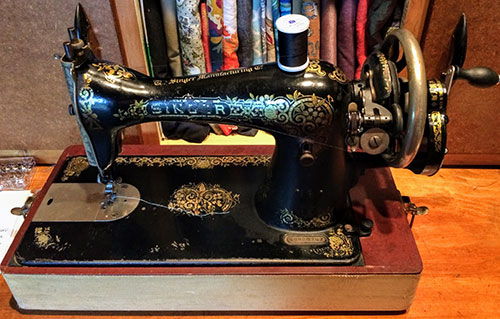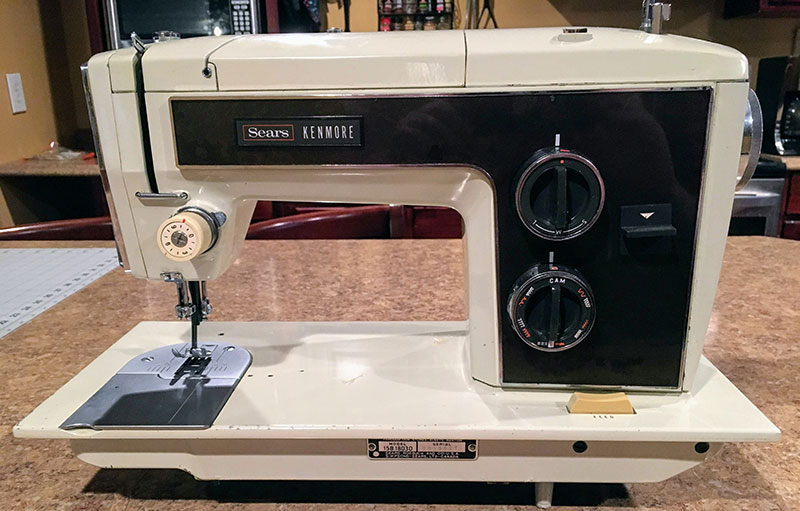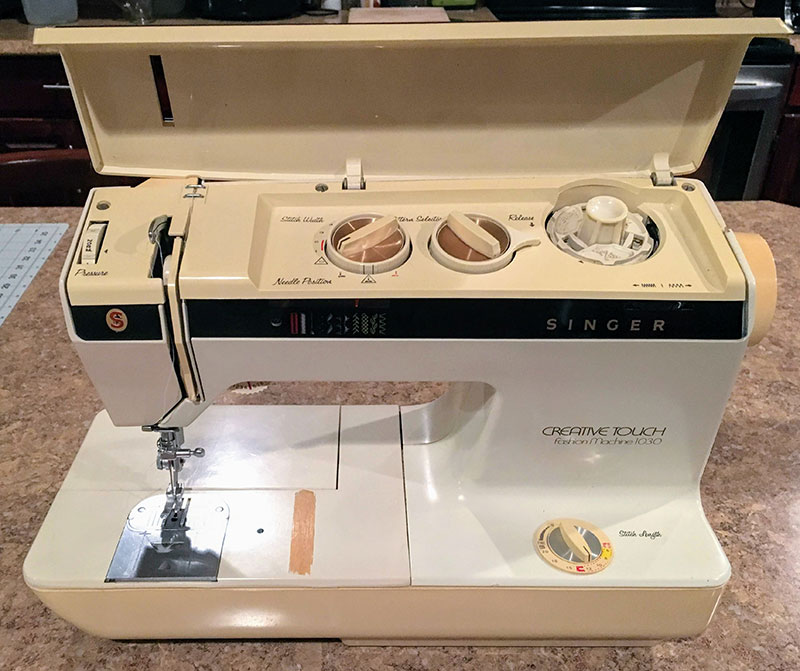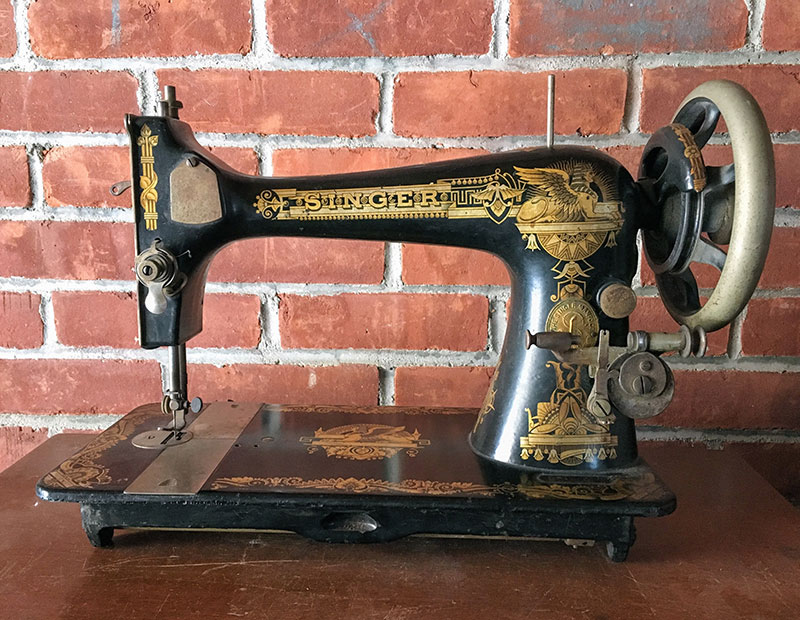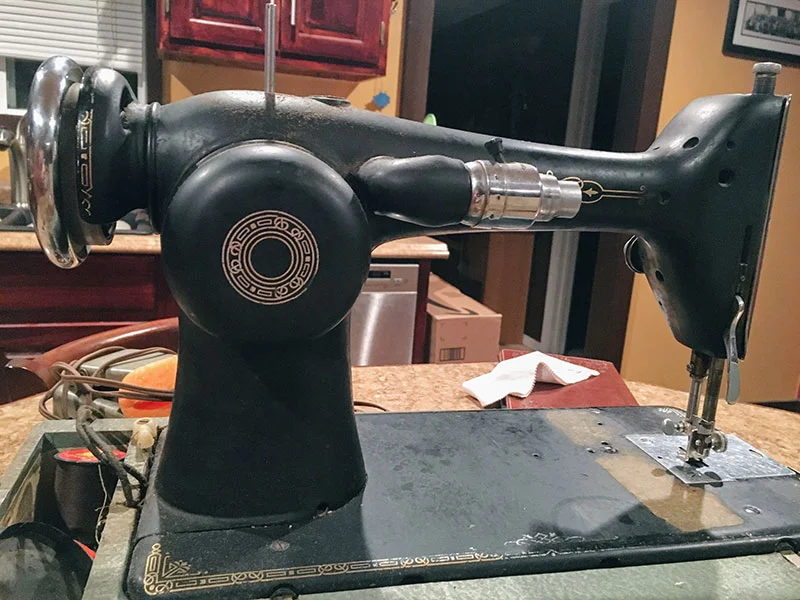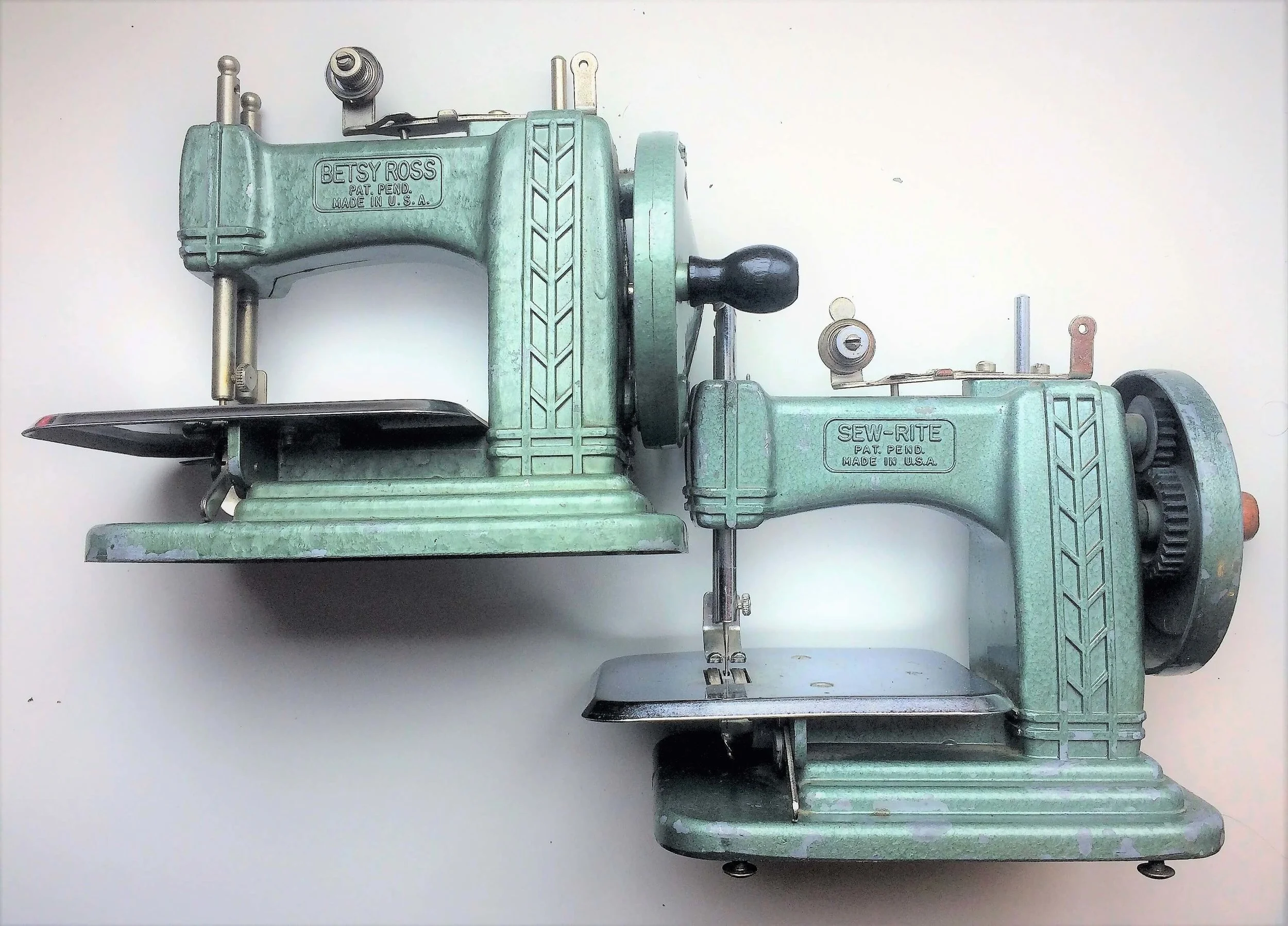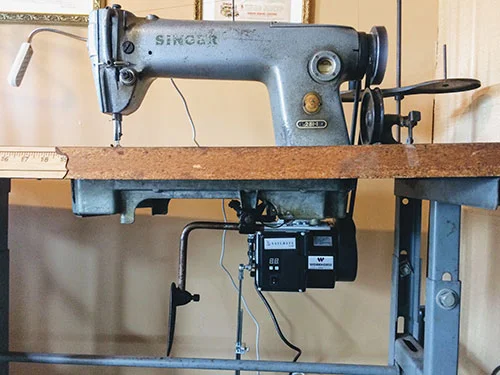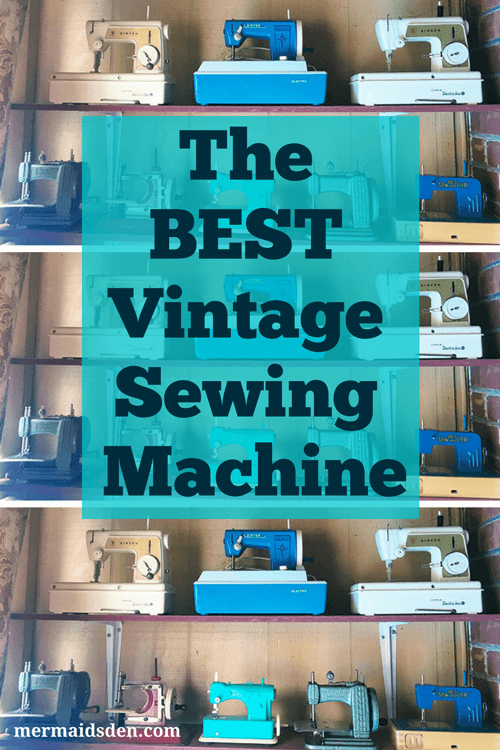The Best Vintage Sewing Machine
In this post, I’ll cover some of the best vintage sewing machines out there. I’ve written a few overview posts on vintage sewing machines, but not one that specifically deals with the best vintage sewing machine because, honestly, I'm not sure there's one best machine to get. Still, it's something that people keep asking about, so I thought I'd take a stab at it.
However, I definitely have some preferences and recommendations, especially for different categories of machines, such as straight stitch, zigzag, treadle, industrial, toy, and sewing leather. I'm also going to go over other bloggers' recommendations, so you'll get a well-rounded idea of what people look for in a vintage sewing machine.
Disclosure: This post contains affiliate links, which means I may receive a percentage if you make a purchase using these links. This won’t cost anything extra to you. See my privacy policy for more details.
My Other Posts on Vintage Sewing Machines
Here are a few of my overview posts on vintage sewing machines:
General Guidelines for Evaluating Vintage Sewing Machines
In my post on How to Start Sewing for Free, I mentioned these guideline for checking out a vintage sewing machine:
When you're at the store, pick it up. Is it surprisingly heavy? That means it's probably all metal inside. Metal gears and parts don't wear out as fast as plastic ones. If it's lightweight, don't get it. Turn the handwheel. Does the needle go up and down? Do the feed dogs under the needle move back and forth? Is there a bobbin and bobbin case underneath the needle plate? Are there any obvious missing parts?
Best Vintage Straight Stitch Sewing Machines
Early sewing machines only sewed in a straight line. Some of them didn't even sew in reverse! Still, you can do a lot with a straight stitch machine, and because they are built for a single purpose, they are very good at what they do.
Cheryl Warren notes that many sewists love their Featherweights, but that the Featherweight doesn't really produce a better stitch than any other straight stitch machine. People like them because they're cute, light, and they haven't used any other dedicated straight stitch machines.
Singer Featherweight Sewing Machine
I reviewed the Featherweight myself, and I'd agree with her. It's a nice machine, but I'm not sure it's worth the hype, unless you want to be able to take it to a quilting class or travel with it. The body is made out of lightweight aluminum, rather than the heavy cast steel or cast iron that most other straight stitch machines are made of, but it comes with a much heftier price tag than most straight stitch machines.
The same goes for the Featherweight's cousin, the Singer 301. It's a nice machine, but people often want too much money for them.
Singer 301 Sewing Machine
My first straight stitch machine was a Singer 99, which is still one of my favorites. I even got a second one! The Singer 99 is a 3/4 size sewing machine, so it's smaller and more portable than regular-sized sewing machines.
Singer 99k Sewing Machine
Its big sister is the Singer 66, which is also a solid machine. They take standard needles and bobbins, and it's easy to find manuals and parts for them. If the original motor is not in good shape, you can easily replace the motor or convert it to a hand crank.
Singer 66 Sewing Machine
For a straight stitch machine, I'd recommend a Singer 99, Singer 66, or Singer 15, as they're all relatively common, easy to service yourself, easy to find parts for, and easy to use.
Singer 15 Sewing Machine
Peter Lappin of Male Pattern Boldness has a post on his favorite vintage sewing machine as well. His favorite machine is the Elna Grasshopper. I don't have one of these, but I've heard good things about them, and I'm actively looking for one. These were marketed as an alternative to Singer Featherweights, so it's small, compact, lightweight, and bright green! It's a no-frills straight stitch machine that is solidly engineered.
Cost: free to $60. I wouldn't pay more than that--these are pretty common sewing machines.
Best Vintage Zigzag Sewing Machines
In contrast to straight stitch machines, zigzag machines can sew a greater variety of fancy stitches, such as the ones below.
Zigzag Stitch Selector
Most straight stitch machines will be all metal, mechanical machines. As sewing machines started to come with more options, they also started to come with cheap plastic parts or computerized parts, which are nearly impossible to fix. If you see plastic gears or circuit boards inside, it's probably not the best zigzag machine.
I was really disappointed to open up this sewing machine and find a circuit board. This is probably not something I can fix up, but we'll see how it goes.
Circuit Board in Singer Touch-Tronic 2005 Sewing Machine
So how did sewing machines make fancy stitches before they were computerized? They used cams, which are discs that divert the course of the needle bar, so that it sews something other than a straight line of stitches. Sometimes these cams are built into the machine, and sometimes you can insert them separately.
Below, on the left, you can see a cam stack that is built into the sewing machine. You can select one of these discs via a stitch selector on the outside of the machine, and the needle bar will follow the pattern of the cam to produce that stitch.
Cam Stack Inside Sewing Machine
Brian Sews has a post on vintage sewing machine addiction: a survival guide and also a post with a reader question about the best vintage sewing machine to buy. I was kind of surprised to see that his favorite sewing machine is a Kenmore zigzag machine. I'd passed over a few Kenmores in my travels, just because they really don't look like much. I know looks aren't everything, but Kenmores are, well, ugly.
Still, the next time I came across one in the wild, I bought it because of Brian's post. It came with a full set of cams and attachments, too! It turned out to be an excellent all-metal, mechanical machine, so don't overlook those vintage Kenmores.
Kenmore 158.18030 Sewing Machine
Here's a box of plastic cams that came with this Kenmore sewing machine. It's okay if your cams are plastic--you just don't want parts that will be in continuous use within the sewing machine to be plastic because they'll wear out and break.
Box of Sewing Machine Cams
I have to admit that I'm a sucker for zigzag machines with weird stitches. I particularly love animal stitches, like birds and fish.
Sewing Machine Cams
I got one sewing machine just because it could do a Scottie dog stitch. And if you look at the stitch selector I posted at the top of this section, you'll see another dog stitch on the far right.
Scottie Dog Cam for Sewing Machine
However, the machine that uses the Scottie cam has an oddly shaped bobbin that winds in place (the Touch & Sew bobbin), which, from what I've heard, is very hit or miss in terms of how well it works.
Singer Creative Touch Sewing Machine
It's harder for me to pick a favorite zigzag machine because there are so many options. In general, you want to look for something that is all metal, mechanical, not made in China, and that takes standard-sized bobbins.
I would recommend Kenmore zigzaggers and the Singer Rocketeer series: the 500, 500A, 503, and 503A. I have a Singer 503A, and it's a lovely, all-metal machine with a lot of options for drop-in cams.
Singer 503A Rocketeer Sewing Machine
Cost: free to $100ish. These can cost a little more, but I wouldn't go over $100 unless it's a really special machine. Zigzaggers turn up quite often.
Best Vintage Treadle Sewing Machines
I don't have a treadle sewing machine, but I do have a couple of machines that I'd like to put into a treadle table once I get one, like this beautiful Singer 27!
Singer 27 Sewing Machine
One of my favorite blogs is by Cheryl Warren of Dragon Poodle Studio, and I recently listened to an interview with her on collecting vintage sewing machines from the Podcast Hello My Quilting Friends with Leah Day. Cheryl wrote a corresponding blog post to go with the podcast on finding the right treadle machine. And she also has a post on buying one good vintage sewing machine.
Her advice is really comprehensive and helpful. For treadling, she recommends getting a Singer table, which will fit most standard-sized machines. You don't have to keep the sewing machine that's in it, but if you want to swap it out, make sure you get a vintage machine with a belt-driven motor, rather than a potted motor. You need a way to attach the treadle belt to your sewing machine. Singer 15s and 15 clones are a good choice to start with, but watch out for those potted motors on the Singer 15-91s!
Below, you can see an example of a potted motor on a Singer 101. The motor is underneath the round, decorated plate.
Potted Motor on a Singer 101
And here, you can see an example of a belt-driven motor on a Singer 66. The motor is bolted onto the back of the machine and connects to the hand wheel with a red belt. This is also where you'd attach a treadle belt. Now that I'm looking at it, I think the Singer 101 might actually work as a treadle machine, since the hand wheel has the same belt guard as the Singer 66, but be cautious if you see a potted motor because that won't always be the case.
Belt-driven Motor on a Singer 66
I also asked Melissa Shields of the Quilting Room with Mel about her pick for the best vintage sewing machine, but she didn't want to play favorites. Her husband Paul, however, has a post on why he doesn't have a favorite treadle sewing machine. See also Part II and Part III of this series.
The initial post goes over features to look for, different types of treadle machines, and some recommendations. I was surprised to see that he recommends VS (vibrating shuttle) machines for treadling because of their superior stitch quality. I actually haven't used my Singer 27, since I don't have a way to power it, but I had heard elsewhere that round bobbins work better than long shuttles, so it was interesting to see that Paul prefers shuttles. So now I'm excited to see what that Singer 27 can do!
Cost: free to $300ish. If it's rare or particularly ornate, you might pay more. If you keep an eye out, you can find treadle machines pretty cheap. I've passed up a few in the $50-100 range, which I now regret.
Best Vintage Toy Sewing Machines
I love how cute toy sewing machines are! I have a small collection of them on display in my office, and I wrote a guide to Betsy Ross toy sewing machines.
Betsy Ross Toy Sewing Machines
I think they're fun to tinker with and nice to use as display pieces. Given how small they are, they're surprisingly functional as sewing machines. But, having said that, they're not very good sewing machines.
Vintage Toy Sewing Machines
Most of them only make a chain stitch, rather than the usual lock stitch, which can unravel easily. And while they usually have tension mechanisms and thread guides, stitch tension is hit or miss. They jam easily, and you have to be careful removing your fabric, so you don't accidentally unravel the whole line of stitches. I've spent a lot of time trying out different toy sewing machines in the hope of finding a good travel machine for sewing on the go, and I have not been successful.
I would not recommend that you get one as a child's first sewing machine. This would probably frustrate the child and make them dislike sewing. Plus, vintage toy sewing machines are pretty collectible, and you'd probably pay as much as you would for a regular, full size sewing machine. Consider getting a 3/4 size Singer 99 for a child.
Cost: 10-200ish. This varies depending on quality and rarity.
Best Vintage Sewing Machine for Leather
I'm including this category because there are so many scammers out there. You'll often see online sellers claiming that vintage sewing machines are heavy-duty, semi-industrial sewing machines capable of sewing through multiple layers of thick tooling leather. They'll even include a picture that seems to support this assertion.
You know what they never do, though? Include a video of them using the sewing machine in question to sew through the three to four layers of thick leather they show in the picture.
Vintage sewing machines are burlier than most modern machines, even ones that are marketed as "heavy duty," but they are not semi-industrial and they are not capable of sewing through thick leather, certainly not with the beautiful, even stitches shown in those photos.
You could probably buy one of the straight stitch machines recommended above and sew through 3-4 layers of upholstery leather or thin leather. But that's it. Check out the Leatherworker.net Forums for expert advice on sewing machines for leather. They have a number of threads related to what vintage sewing machines are and are not capable of sewing.
Cost: Same as for vintage straight stitch sewing machines.
Best Vintage Industrial Sewing Machines
Okay, I only own one vintage industrial sewing machine (see my post on restoring a Singer 281-1), but I've looked at a handful of them. In the past few decades, a lot of factories "upgraded" their sewing machines and sold off their vintage industrial Singers. It seems like industrial Singers in the 200 range are pretty similar and turn up for sale often enough that you could probably get your hands on one without too much trouble.
These sewing machines are sturdy, reliable, and you can still find parts for them. Manuals are available online. They take standard industrial needles and presser feet. They can handle heavier duty materials, but they're also not going to sew through multiple layers of thick leather. Now you can see why I'm such a skeptic about those domestic sewing machines that are marketed for sewing leather!
If this burly industrial machine can't handle sewing that kind of leather, how could a domestic machine possible do it?
Singer 281-1 Industrial Sewing Machine
I only mention this because I don't want you to be disappointed if you buy one of these for the wrong reason. I use my Singer 281-1 a lot, and it's one of my favorite sewing machines. There are a lot of things an industrial sewing machine can do that a regular sewing machine can't. I even use it for quilting because of the extra large harp space.
Quilting with Singer 281-1
Before getting a vintage industrial sewing machine, remember that it was likely used in a factory, and that the motor might not be compatible with at-home use. My Singer 281-1 came with a 380 volt, three phase clutch motor. Basically, this motor was rated for an industrial space with a much beefier electrical capacity than your average home has.
If you're interested in learning more about the differences in electrical capacity between home and commercial/industrial settings, check out Fashion Incubator's post on zoning in Commercial vs Industrial spaces. I ended up replacing the motor on my 281-1, which cost about $200, so you may need to factor that into the cost of your machine.
Cost: free to $600, plus potential motor replacement. These are big, heavy space hogs that can be hard to sell, but they also don't turn up as often as domestic sewing machines.
More Vintage Sewing Machines
Want to see more vintage sewing machines? Check out my Vintage Sewing Machines board and my Sewing Machine Restoration, Repairs, and Reviews board on Pinterest.
You may also want to check out this collection of free vintage sewing patterns from All Free Sewing!
And see below for my favorite books on vintage sewing machines and accessories.
